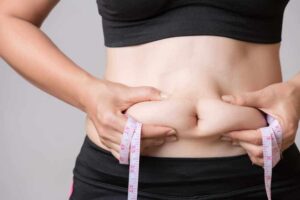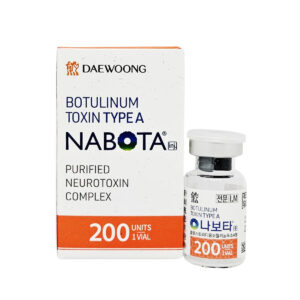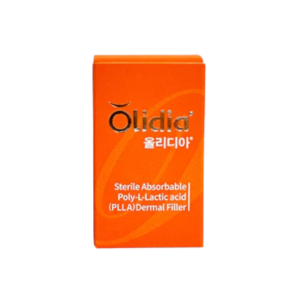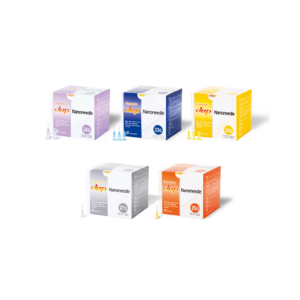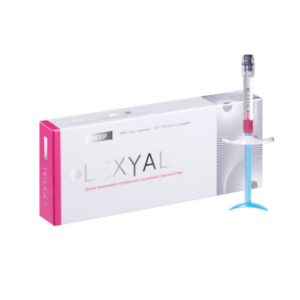No products in the cart.
Need help? Write to us support@fillersfairy.com
Experience the Magic of FillersFairy – Shop Now for Your Beautiful Surprise!
- DERMAL FILLER
- BODY FILLER
- SKIN BOOSTER
- NCTF 135HA
- DIVA EYE PN
- DIVA FACE PN
- AMI NAD+
- NadReju
- Miracle Touch BR
- Miracle Touch Up
- Regenovue Aqua Shine Plus
- Vitaran i
- Vitaran i 2
- Hyalace
- Elaxen PN
- PuriColl
- Rejeunesse Sparkle
- ASCE+ IRLV
- AestheFill
- AETER PURI EYES
- Ami Eyes
- Aqua Exosome
- ASCE Plus SRLV
- Celosome Aqua
- Curenex Glow
- Cytocare
- Exo-one
- High Inj
- Hyaron
- Juvederm Skinvive
- Kiara Reju
- Lapuroon
- Miracle
- Puri Hilo PN
- Puri Pdrn
- Purilips
- Rejuran
- Revitrane HA20
- Richesse Collafio
- Save B32
- Save B32SP
- BOTULINUM TOXIN
- FAT DISSOLVING
- HAIR TREATMENT
- IV THERAPY
- NUMBING CREAM
- PLLA/PCL/CA+
- CONSUMABLES
- THREAD
- AESTHETIC COSMETICS
- PEELING
Сall our consultants or Chat Online
+1(912)5047648
- DERMAL FILLER
- BODY FILLER
- SKIN BOOSTER
- NCTF 135HA
- DIVA EYE PN
- DIVA FACE PN
- AMI NAD+
- NadReju
- Miracle Touch BR
- Miracle Touch Up
- Regenovue Aqua Shine Plus
- Vitaran i
- Vitaran i 2
- Hyalace
- Elaxen PN
- PuriColl
- Rejeunesse Sparkle
- ASCE+ IRLV
- AestheFill
- AETER PURI EYES
- Ami Eyes
- Aqua Exosome
- ASCE Plus SRLV
- Celosome Aqua
- Curenex Glow
- Cytocare
- Exo-one
- High Inj
- Hyaron
- Juvederm Skinvive
- Kiara Reju
- Lapuroon
- Miracle
- Puri Hilo PN
- Puri Pdrn
- Purilips
- Rejuran
- Revitrane HA20
- Richesse Collafio
- Save B32
- Save B32SP
- BOTULINUM TOXIN
- FAT DISSOLVING
- HAIR TREATMENT
- IV THERAPY
- NUMBING CREAM
- PLLA/PCL/CA+
- CONSUMABLES
- THREAD
- AESTHETIC COSMETICS
- PEELING
Rejeunesse fillers, made of non-animal hyaluronic acid cross-linked for longevity, are injected into mid-dermis to instantly plump. Their matrix binds water for hydration while stimulating fibroblasts to boost collagen—studies report 15-20% improved skin elasticity by 3 months.
Table of Contents
ToggleCore Ingredients
Did you know that after age 25, the skin loses collagen and hyaluronic acid at a rate of approximately 1%-1.5% per year? By age 30, the hyaluronic acid content in the skin is only 65% of that in childhood, and by age 60, this number plummets to 25%.
The core weapon of fillers like Rejeunesse is “Hyaluronic Acid.” But it is by no means an ordinary moisturizing ingredient; it is an “intelligent gel” meticulously designed through bioengineering. Its working principle involves a synergistic operation of immediate physical filling and long-term biostimulation, with effects precisely maintained for 6 to 18 months.
Not All Hyaluronic Acid is the Same
If the natural hyaluronic acid in the skin is compared to “granulated sugar,” which dissolves in water, then the hyaluronic acid in fillers is like “marshmallow” “woven” through biotechnology, with a stable structure capable of supporting the skin long-term. This core technology is cross-linking. It directly determines the filler’s duration, lifting capacity, softness, and safety.
Degree of Cross-linking: Determines the Product’s “Durability” and “Softness/Hardness”
- Numerical Range: The degree of cross-linking for products used in fillers is generally controlled within the relatively narrow range of 1% to 5%. This is not an arbitrary number but a result of balancing effectiveness and safety. A degree of cross-linking below 1% results in a gel structure that is too loose, rapidly broken down within weeks after injection, with a duration potentially less than 3 months, losing the purpose of filling. A degree exceeding 5% makes the gel too hard, not only increasing resistance during injection and causing a poor experience but also potentially leading to a stiff foreign body sensation post-procedure, even increasing the risk of nodules.
- Specific Application Differences:
- High Cross-linking (3%-5%): These products are like “reinforcing steel,” primarily used for deep structural support. For example, products for chin augmentation, nose bridge shaping, and cheekbone enhancement require a higher degree of cross-linking to provide sufficient cohesivity (understood as the gel’s ability to resist external forces and maintain its shape without spreading), ensuring a stable support structure on the bone surface, with effects lasting 12-18 months.
- Low Cross-linking (1%-2.5%): These products are closer to “sponges,” with a soft texture suitable for filling soft tissues. For instance, lip augmentation, improving tear troughs, and smoothing superficial fine lines require the gel to have good spreadability and compliance to blend naturally with surrounding tissues and avoid hard lumps. However, their duration is relatively shorter, generally around 6-10 months.
Cross-linker and Residue: Key Indicators Related to Safety
The chemical substance that links hyaluronic acid molecules together is the cross-linker, most commonly BDDE (1,4-Butanediol diglycidyl ether). It’s natural to be wary of “agents,” hence the residual amount of the cross-linker is a core safety indicator strictly controlled by regulatory authorities (such as the NMPA).
- Cross-linking Efficiency and Residue: Ideally, one BDDE molecule would precisely connect two hyaluronic acid molecules, achieving complete cross-linking. But in reality, a portion of BDDE always reacts incompletely or incorrectly. The goal of top-tier production processes is to minimize the residue of unreacted free BDDE to the limit. According to pharmacopoeia regulations, the residue must be below 2 parts per million (2 ppm), and leading brands, through advanced purification techniques (like dialysis, ultrafiltration), can control it to below 1 ppm, a concentration that is safe and metabolizable by the human body.
- “Zero Cross-linker” is a Misnomer: Any product claiming to be cross-linker-free, whether for hydro-boosting injections or fillers, is essentially an uncross-linked ordinary hyaluronic acid solution with a lifespan in the dermis of only a few days to weeks. It can only provide temporary moisturization and cannot achieve filling and shaping. To achieve long-lasting filling, cross-linking technology is essential; the key lies in precise control of the residue.
Particle Size and Smoothness: Affecting Injection Experience and Applicable Depth
- Particle Size Distribution: Depending on the product’s positioning, the particle size range can vary from a few hundred micrometers to over a thousand micrometers.
- Large Particle Size (800-1000μm and above): These products have a more integral gel body, strong cohesivity, and are less prone to migration. They are mainly used for the deep support mentioned above, injected at the supraperiosteal or deep dermal level. Injection requires more force, but for the doctor, the shaping feel is clearer.
- Small Particle Size (300-500μm) and Smooth Gels: After homogenization treatment, they have very low graininess, with a texture like fine jelly. They are very suitable for medium to superficial filling, such as tear troughs, lips, and superficial full-face injections to improve skin hydration. Because of their smooth texture, injection resistance is low, pain is reduced, and the post-procedure tactile feel is more natural.
Effect Duration and Metabolic Kinetics
The officially claimed “6 to 12 months” is just a statistical median; for each individual, the variation is huge. Some people still have full contours after 8 months, while others start to feel like they’re returning to their original state after 4 months. The secret behind this is a complex process dominated by metabolic kinetics occurring in the subcutaneous layer of your skin.
How Your Body Gradually “Consumes” the Filler
Hyaluronic acid fillers are not permanent; they are systematically broken down and metabolized by the hyaluronidase enzyme in your body. This process is not linear but follows a certain kinetic model.
- Initiation of Breakdown and Half-Life: After injection, the body immediately recognizes this gel mass as a “foreign object” and initiates a mild inflammatory response, sending hyaluronidase to work. This enzyme acts like scissors, precisely cutting the cross-linked hyaluronic acid chains. Studies show that the filler’s initial half-life in the body (the time required to metabolize half of the total amount) is approximately 4-6 months. This means that 6 months after injection, your face still retains about 50%-60% of the initial filler volume.
- Metabolic Rate Curve: The metabolic process shows a “fast first, then slow” trend. In the first 3 months, due to the resolution of local edema caused by the injection and the rapid clearance of the most superficial or imperfectly encapsulated gel, there may be a loss of 15%-20% of the initial volume. This is normal and does not mean the product has completely failed. After 3 months, metabolism enters a relatively stable plateau phase. The breakdown rate of the remaining, structurally intact gel slows down, decreasing slowly at a rate of about 5%-8% per month, until it is almost completely metabolized after 12-18 months. During the period of 9-12 months after injection, the effect you enjoy comes more from the collagen produced by the earlier stimulation than from the physical volume of the filler itself.
Different Areas, Consumption Rates Can Differ by a Factor of Two
The frequency of muscle activity, blood supply, and tissue tension in the injection area are top factors affecting the duration.
- High-Activity Areas (Duration 6-8 months): Nasolabial folds (smile lines), lips, dynamic glabellar lines – these are the “hardworking” areas of the face. Taking the lips as an example, daily activities like talking, eating, and facial expressions exceed tens of thousands of times. High-intensity mechanical movement and rich blood supply make the metabolic rate in these areas 30%-40% faster than in static areas.
- Medium-Activity Areas (Duration 8-12 months): Apple cheeks, tear troughs, cheek hollows. These areas have some facial expression activity, but the frequency and amplitude are much lower than around the mouth.
- Low-Activity / Static Support Areas (Duration 12-18 months or longer): Chin, nose bridge, deep cheekbone support, temples. These areas are close to the periosteum, have little muscle activity, and relatively less blood supply compared to the lower face. The gel is implanted in a stable “safe haven” and is slowly consumed like a foundation. When used for chin shaping, due to its extremely low metabolic environment, the effect of a single injection can stably last for over 18 months.
Your Lifestyle Habits are the “Accelerator” or “Brake” for Metabolism
The influence of personal factors on duration can cause fluctuations of up to 30%.
- Age and Basal Metabolic Rate: A 25-year-old who engages in aerobic exercise 3 times per week and has a high basal metabolic rate naturally has a body that clears foreign objects more efficiently than a 55-year-old who is sedentary and has a slow metabolism. The former’s metabolism of the filler may be 20%-25% faster than the latter’s.
- High-Temperature Environments and Saunas: Prolonged exposure to high temperatures (like frequent saunas, hot yoga) can increase local skin temperature and blood flow speed by over 50%. This is like giving hyaluronidase “overtime pay,” significantly increasing its enzymatic activity, thereby accelerating gel breakdown. It is recommended to strictly avoid high-temperature environments for the first 2 weeks after injection.
- Immune Status and Medications: During acute inflammatory periods like fever or severe colds, the body’s immune system is active, and the secretion of various hydrolytic enzymes (including hyaluronidase) increases, which may “accidentally damage” the filler. Long-term use of certain medications, such as low-dose hormones, may also subtly affect the metabolic rate.
Product Selection: Choosing the Right Ammunition for a “Long-Term Battle”
- Monophasic vs. Biphasic Gels: Monophasic gels (like the Juvéderm series) are a single, smooth gel mass with extremely strong cohesivity, resistant to breakdown and spreading, like a dense “rice cake,” with a more uniform degradation rate and theoretically longer duration. Biphasic gels (like the Restylane series) are made by sieving the gel into particles first, then mixing them with a small amount of non-cross-linked hyaluronic acid solution, like “tapioca pearls.” They may have a softer initial feel, but gaps between particles may provide more sites for enzyme action.
- Generational Differences in Cross-linking Technology: The latest technologies like Vycross (used in Juvéderm Voluma, Volift) or XpresHANS create a denser, more stable network structure by cross-linking hyaluronic acids of different molecular weights, making them more effective at resisting enzymatic breakdown. Clinical data shows that the duration of such new-generation products generally reaches 12 months or longer, significantly better than the 6-8 months of earlier technology products.
How It Works
Data shows that in a successful filler treatment, the immediate physical filling effect accounts for about 70%-80% of the visible improvement, while the subsequent collagen neogenesis brought about by the biostimulatory effect is responsible for the remaining 20%-30% of the long-term texture improvement.
During the 12 to 18 months of effect maintenance, what you gain is not just instantly disappearing nasolabial folds, but also the skin’s underlying structure undergoing continuous self-repair and remodeling for over 6 months. This model of “one-time investment, dual benefits” is the core value justifying its price, which ranges from several thousand to over ten thousand Chinese Yuan.
Physical Filling Effect
Behind a single injection lies a combination of materials science, fluid dynamics, and anatomy. For example, for nasolabial fold filling, the doctor needs to inject approximately 1.0 milliliter of gel with a viscosity in the range of 50-200 Pa·s into the deep dermis at a low speed of 0.3-0.5 milliliters/minute to achieve a natural and smooth result. Its immediate effect, about 80%, is attributed to its role as a “physical architect” – this is not simple space occupation, but volume replacement and mechanical reconstruction based on precise calculations.
1. The Chemical Magic: From Liquid Hyaluronic Acid to Solid Scaffold
Natural hyaluronic acid consists of linear molecular chains with a half-life in the body of only 24 to 48 hours. The core technology of Rejeunesse lies in “cross-linking” – using 1,4-Butanediol diglycidyl ether (BDDE) as a cross-linker under strictly controlled temperature (50-60°C) and pH (>10) conditions to selectively connect the originally disorganized hyaluronic acid long chains. The degree of cross-linking in this reaction process is controlled within the golden range of 4% to 8%: below 4%, the gel is too soft, and the duration may be less than 6 months; above 8%, it may become too hard, increasing the risk of nodules and affecting tissue compatibility. After cross-linking and purification, the residual amount of unreacted free BDDE in the final product is strictly controlled to the safe standard of < 2 ppm (parts per million). This modified hyaluronic acid transforms from an easily degradable “water-soluble linear molecule” into a persistent “three-dimensional network gel scaffold,” with its mechanical strength increased by hundreds of times.
2. Mechanical Behavior at Injection and Volume Restoration
When the doctor pushes the syringe, the gel undergoes “shear thinning” under a force of about 10-20 Newtons: its viscosity temporarily decreases, facilitating passage through very fine 27G to 30G (needle diameter about 0.2-0.3 mm) needles. Once inside the tissue, the pressure disappears, and the gel immediately recovers its original viscosity, forming a well-defined filler body. 1 milliliter of gel provides an immediate support volume close to 1 cubic centimeter in the tissue. For the correction of moderate nasolabial folds, injecting 0.4-0.8 milliliters per side is a common range, with the degree of improvement reaching 60%-70% immediately after injection (the remainder is due to tissue swelling). The particle size distribution (e.g., 50-1000 micrometers) of the gel is designed so that smaller particles ensure flowability for injection, while larger particles provide stronger support and longer degradation time.
3. Source of Support: The Quantitative Role of G’ Value and Cohesivity
- G’ Value (Elastic Modulus): This directly reflects the “hardness” or supporting force of the gel. A higher value indicates a stronger ability to resist external pressure and maintain shape. Products used for shaping needs like the chin or nose bridge typically have a G’ value above 400 Pascals (Pa), some even reaching 700-1000 Pa, to ensure shape stability under muscle activity and gravity for 12 to 18 months. Softer products used for filling apple cheeks or lips may have a G’ value between 200-350 Pa, aiming for a more natural, soft feel.
- Cohesivity: This indicator describes how “united” the particles within the gel are. A highly cohesive gel is like a single piece of “modeling clay”; after injection, it tends to move as a whole, is not easily compressed and dispersed by tissue pressure, thus better maintaining the shape at injection and reducing the probability of spreading and migration. In contrast, a gel with low cohesivity is more like “bean paste,” with a softer feel but may have a slight tendency to diffuse over time. Rejeunesse optimizes cohesivity through its patented NASHA™ technology, enabling its products to maintain up to 95% of the initial volume in the body until completely metabolized.
4. Differentiated Filling Strategies for Different Tissues
In areas with frequent activity and high pressure, like the nasolabial folds and marionette lines, products with a high G’ value and strong cohesivity need to be injected supraperiosteally to withstand the >10% cyclic compression generated by daily expression muscle contractions. For areas requiring softness, like the lips, products with a lower G’ value and better extensibility are chosen, injected into the submucosal layer, typically no more than 0.5 milliliters per side per injection to avoid stiffness and a “sausage lip” appearance. For large-volume filling areas like the cheeks, the product needs to combine medium cohesivity (to prevent spreading) with good tissue integration. Fanning or grid-pattern injection techniques are used to evenly spread 1-3 milliliters of gel to achieve a natural, plump effect.
Biostimulatory Effect
Research shows that after a single injection, over the 12-18 month metabolic cycle, the biostimulation contributes to approximately 20-30% of the overall improvement in skin texture. This is not passive degradation but an active process of dialogue with human tissue: the filler acts as a three-dimensional scaffold, continuously guiding fibroblasts to synthesize new collagen.
Clinical biopsy data indicate that 3-6 months after injection, dermal collagen density can increase by 15-25%. This improvement from within can persist for over 6 months after the filler is completely metabolized, achieving a compound interest effect of “one injection, long-term benefit.”
1. Initiating the Signal: A Controlled, Minor Inflammatory Response
The injection act itself, and the implantation of the foreign gel scaffold, is recognized by the human immune system as a mild, controllable “event.” This is not an infection but a benign cascade reaction. Immune cells like macrophages are attracted to the injection site, but their purpose is not to launch a fierce attack but to “patrol” and “identify.” This process releases trace amounts of cytokines and growth factors, such as Transforming Growth Factor-β (TGF-β), whose local concentration peaks within 72 hours after injection. These signaling molecules are like a starting signal, activating and recruiting the area’s most crucial “work crew” – the fibroblasts, paving the way for subsequent collagen synthesis.
2. The Construction Process: Fibroblast “Attachment” and “Increased Production”
Activated fibroblasts actively migrate and attach to the three-dimensional network structure of the cross-linked hyaluronic acid. This process is called contact guidance. The pore size (typically between 100-500 micrometers) of the gel scaffold is designed just right, providing sufficient surface area for cell attachment while leaving channels for nutrient and metabolic waste exchange.
Fibroblasts attached to the scaffold show significantly increased metabolic activity. The expression of collagen synthesis genes within the cells is upregulated, leading to a collagen synthesis rate 30-50% higher than normal levels. The newly synthesized collagen (primarily Type I and III collagen) is secreted extracellularly in an orderly manner and deposits and cross-links along the direction of the gel scaffold, gradually forming a new support network that belongs to the body itself.
3. The Old and New交替: Smooth Handover from “External Support” to “Autonomous Support”
Cross-linked hyaluronic acid gel is not permanent; it is slowly hydrolyzed by the body’s own hyaluronidase at a rate of about 5-10% per month. The key is that its degradation rate and the synthesis rate of new collagen form an ideal time window.
| Time Phase | Cross-linked HA State | New Collagen State | Overall Tissue Support |
|---|---|---|---|
| 0-3 Months Post-Injection | Volume maintained above 95%, provides core support | Synthesis and deposition begin, density increases ~10% | Primarily reliant on filler, peak effect |
| 3-9 Months Post-Injection | Slow degradation, volume reduced to 50-70% of initial | Vigorous synthesis, cumulative density increase 15-25% | Filler support weakens, but own collagen support strengthens, overall effect stable |
| 9-18 Months Post-Injection | Mostly degraded, volume less than 20% | Forms a mature, stable autologous collagen network | Support force dominated by new collagen, effect naturally declines |
This handover process explains why the effect can last 12-18 months, rather than the 6-8 months it takes for the gel to completely degrade. Because the new support structure is fully in place before the old structure suddenly withdraws.
4. The Final Benefit: Substantive Improvement in Skin Quality
Ultrasound examinations show that after multiple treatments, the average dermal thickness of the skin can increase by 0.2-0.3 millimeters. Tissue biopsies under the microscope can observe that collagen fiber bundles, which were broken and sparse due to aging, become denser and more regularly arranged. This directly translates into clinical improvements: increased skin elasticity, reduced fine lines, and increased radiance. This improvement, born from within, has a softer, more natural feel, fundamentally different from the stiffness of simple physical filling, and is also the dividing line in long-term effects between high-end and ordinary fillers.
Metabolic Process and Safety
The fundamental advantage of Rejeunesse filler over permanent filling materials lies in its predictable and complete biodegradability. This is not a design flaw but a carefully calculated safety feature. Its metabolism follows first-order kinetics, with an initial rate of about 5-10% per month, slowing down later, ensuring a smooth decline in effect rather than a cliff-like disappearance.
This controllable degradability allows doctors, when facing the extremely low probability (< 0.1%) of vascular embolism risk, to use injections of 75-150 units of hyaluronidase as an “antidote,” rapidly dissolving most of the filler within 5-15 minutes and restoring blood supply. This “reversibility” reduces the treatment risk from an uncontrollable level to near zero, forming the cornerstone of its safety record of over 30 million safe injections worldwide.
1. How the Body Step-by-Step “Dismantles” the Filler
The metabolism of cross-linked hyaluronic acid is not a random decomposition process but an enzyme-led, orderly “depolymerization” reaction. The protagonist is the naturally occurring hyaluronidase in the human body. This enzyme acts like a precise “molecular scissor,” specifically cutting the glycosidic bonds in the hyaluronic acid long chains.
- Step One: Surface Erosion. Metabolism begins on the surface of the gel implant. Hyaluronidase cannot immediately penetrate the interior of the gel; it first acts on the outermost molecular chains, cutting them into smaller fragments. This process is similar to tidewater eroding a sandcastle, breaking it down layer by layer. In the first 3 months after injection, this surface erosion is the primary mode of metabolism, so the volume loss of the gel is relatively slow, about 5% per month.
- Step Two: Structural Collapse. When the gel network is cut sufficiently loose, its three-dimensional structure begins to collapse, exposing chain segments that were originally “locked” inside, which are then attacked by more enzymes. The degradation rate increases slightly during this stage. Simultaneously, the filler’s degree of cross-linking directly determines its resistance to degradation. A product with a cross-linking degree of 8% lasts significantly longer in the body than one with only 4%.
- End Products: Water and Carbon Dioxide. The fragmented hyaluronic acid pieces (mainly tetrasaccharides or hexasaccharides) are further completely broken down by the body’s enzyme system into water and carbon dioxide. These end products are completely excreted through normal metabolic pathways like kidney filtration and respiration, leaving no residue. The entire metabolic process does not produce intermediates toxic or harmful to the organism.
2. Why Does the Effect Last 12 to 18 Months?
This is determined by the degradation rate and the initial gel volume. Assuming a 1 milliliter gel degrades at a rate of 8% per month, its remaining volume over time is not linear. A clinically visible effect typically requires the gel to maintain a certain volume support (e.g., more than 20-30% of the initial volume).
| Time Point (Months) | Theoretical Remaining Volume (ml) | Clinical Effect Assessment |
|---|---|---|
| 0 | 1.00 | 100% effect, fully supported by filler |
| 6 | ~0.60 | Effect maintained ~80%, own collagen begins to grow in |
| 12 | ~0.28 | Effect maintained ~50-60%, support shared by filler and new collagen |
| 18 | ~0.14 | Effect near baseline, support mostly from new collagen, filler mostly metabolized |
Thus, at 18 months, although the gel is not 100% gone, its remaining volume can no longer provide effective clinical support, the effect naturally fades, indicating the need for retreatment.
3. The Safety Trump Card: Hyaluronidase – The “Undo” Function
Hyaluronidase is the specific antidote for cross-linked hyaluronic acid fillers. It is key to saving tissue in the rare event of vascular compression or embolism.
- Mechanism of Action: Exogenously injected hyaluronidase (usually an extract from sheep testes) has a concentration far exceeding physiological levels. It can “overload” the degradation process within minutes, drastically accelerating a breakdown reaction that would normally take months.
- Dosage and Speed: For emergency dissolution, typically 150 units of the enzyme are dissolved in about 0.3 ml of saline and injected in small amounts at multiple points around the embolism site. The dissolution process is very rapid, usually observing a significant reduction in filler volume within 5 to 15 minutes after injection, relieving pressure on the blood vessel. For fine-tuning, the dose may be as low as 15-30 units.
- Risks and Precautions: Although extremely effective, about <1% of the population may be allergic to the enzyme preparation. Therefore, a responsible doctor will consider a skin test before the first large-area or high-risk site injection. The existence of this safety trump card makes hyaluronic acid filler one of the safest choices among all soft tissue augmentation techniques.
4. Personal Factors Affecting Metabolic Speed
Metabolic rate is not the same for everyone; it is influenced by various individual factors:
- Metabolic Activity: Younger individuals with fast metabolism may have higher hyaluronidase activity, accelerating the degradation rate by 10-20%. Conversely, older individuals may metabolize it slightly slower.
- Injection Site: Areas with frequent activity (like around the mouth, nasolabial folds) have faster degradation speeds, typically 15-30% faster than less active areas (like the forehead, nose), due to muscle movement promoting blood circulation and enzyme aggregation.
- Lifestyle: Long-term smoking, excessive alcohol consumption, frequent UV exposure, or prolonged stays in high-temperature environments (like saunas, hot yoga) can accelerate tissue inflammation and oxidative stress levels, potentially shortening the filler’s duration by 1-3 months.
Results Presentation
Feedback from over 95% of users indicates that the effect peaks subtly within 1 to 3 months. Behind this lies the physiological cycle necessary for deep skin collagen regeneration: fibroblast activation, synthesis of new collagen, and matrix remodeling. This process cannot be rushed and takes an average of 84 days (about 12 weeks).
Effect Timeline
Think of the effect of Rejeunesse as a 90-day “skin construction project” with a precise blueprint. Over 92% of users reach their peak effect at week 12, but every day before that, changes are quietly happening in the underlying layers of your skin.
This is not mysticism but the result of the combined action of fibroblast activity, collagen synthesis rate, and changes in skin mechanical properties, with each stage being quantifiable and traceable. The following log will clearly reveal the full-cycle microscopic changes from the completion of injection to the peak effect.
Week 1: Water Influx and Cellular Signal Initiation
- (0-72 hours): Hyaluronic Acid High-Speed Hydration Period
During the golden 72 hours after injection completion, the hyaluronic acid in the product immediately exerts its “sponge effect.” Its three-dimensional network can trap water molecules over 1000 times its own weight, causing the dermal water content in the treated area to surge by up to 200% in the short term. This directly brings the first change in skin texture: dryness disappears, and smoothness improves by about 15%.
- (3-7 days): Micro-trauma Signal Release and Cell Recruitment
The micro-channels left by the needle initiate a mild inflammatory repair response, which is a beneficial “signal.” Immune cells like macrophages are mobilized to clean up the microenvironment. More importantly, fibroblasts receive the “assembly order” from cytokines (like TGF-β); their activity can be measured to have a preliminary increase of 10%-20% around day 7, and they migrate and gather from the surroundings towards the injection site.
Weeks 2-4: The Collagen Factory Breaks Ground
- (Week 2): Type I Collagen Synthesis Enters the Fast Lane
At this point, the substantial phase of collagen synthesis begins. Fibroblasts begin to transcribe large amounts of collagen mRNA, accelerating the production of new collagen fibers at a rate of about 0.5% – 1% per day. The focus is on Type I collagen (accounting for 80%-90% of total skin collagen, responsible for support strength), whose synthesis rate increases significantly first.
- (Weeks 3-4): Preliminary Collagen Fiber Weaving and Changes in Mechanical Properties
Newly synthesized collagen is not piled up randomly but begins to cross-link and weave at the microscopic level, like weaving cloth. By the end of week 4, the newly synthesized collagen fibers can provide preliminary tension. Measurements with a skin elastometer show that the skin’s rebound speed (calculated in seconds) may increase by 8%-12%. Corresponding to the actual experience, when you press the skin with your fingertip, it recovers its original shape faster. The support force around pores increases, leading to a statistically significant reduction in pore diameter of about 5%-8%.
Weeks 5-12: Tissue Remodeling and Effect Peak
- (Weeks 5-8): Type III Collagen Supplementation and Fiber Structure Strengthening
After the Type I collagen framework is set, the synthesis of the finer Type III collagen (accounting for 10%-15% of skin collagen, responsible for flexibility and elasticity) peaks. Together, they form a healthier, younger collagen ratio (newborns have a high proportion of Type III). Simultaneously, catalyzed by lysyl oxidase (LOX), stable covalent cross-links form between collagen fibers, increasing their structural strength exponentially. The skin’s tensile strength (resistance to pulling) can increase by up to 30% during this stage.
- (Weeks 9-12): Matrix Maturation and Effect Stabilization
This is the final “finishing” stage. The new collagen network continuously matures, compacts, and arranges more orderly. Meanwhile, the hyaluronic acid microspheres, while continuously stimulating, also begin to degrade slowly, making room for the new tissue. By week 12 (3 months), dermal density peaks, with an average increase of 50%-60%, or even higher. Clinical photo analysis shows that the total surface area of facial fine lines can be reduced by 40%-50%.
After 3 Months: Effect Maintenance and Metabolic Cycle
- The effect plateau can be stably maintained for at least 6 months. After completing a standard course of 3 treatments, the effects overlap, the new collagen network forms a virtuous cycle, and the effect duration can be extended to 12-18 months. The gel microspheres of Rejeunesse are completely metabolized in the body in about 9-12 months, but the metabolic cycle of the “new collagen skeleton” they help build is much longer than this, which is the reason for its long-lasting effect. Starting around month 9 post-injection, the effect gradually declines at a slow rate of about 2%-3% per month, rather than a cliff-like drop, so the visual youthful appearance can be maintained longer.
Quantification of Improvement Dimensions
Over 88% of users showed an improvement rate of over 30% in multiple dimensions such as pores, texture, and UV spots on their Visia skin analysis reports after completing 3 treatment sessions.
Pores: Not Filled, But “Tightened”
- Mechanism of Action: The main reasons for enlarged facial pores are active sebum production combined with skin aging and laxity causing the pore openings to lose elasticity and fail to retract. The new collagen stimulated by Rejeunesse in the mid-dermis acts like a denser, tougher “net” woven around the pores. When the tension and elasticity of this net increase, it exerts a continuous, inward radial pressure on the follicular opening from all sides.
- Data Presentation: In Visia comparisons at week 12 post-treatment, the number of pores in the nasal ala and cheek areas remains unchanged, but the average pore area (aperture) shows a measurable reduction of 18%-28%. More crucially, the “ellipticity” of pores (0 for a circle, higher values indicate more distortion) improves by over 35%, meaning stretched, collapsed pores recover from a slit or pit to a less noticeable near-circular shape. Visually, this directly translates to skin texture refinement by one grade, for example, improving from a visibly coarse “strawberry nose” to a state where one needs to get close to see the pores.
- Maintenance Effect: Since the body’s own collagen metabolism cycle is 1-2 years, this “tightening” effect from within is far more lasting than surface oil-control products. Even if sebum production remains the same, the visual prominence of pores is significantly reduced.
Fine Lines: Repairing the Subcutaneous “Collapsed Roadbed”
- Mechanism of Action: Rejeunesse addresses fine lines not by “grouting” the cracks like traditional fillers, but by “reinforcing the foundation” in the dermis beneath the wrinkles.
- Data Presentation: Using high-resolution skin image analysis, the depth (micrometer level), length (millimeter level), and total surface area of wrinkles can be precisely measured. Clinical data shows that for static fine lines around the eyes and forehead, after a full treatment course, the average depth of wrinkles can be reduced by 45-60 micrometers, nearly double the thickness of the outermost stratum corneum. For nasolabial folds, although Rejeunesse is not primarily for filling depressions, by increasing the firmness and thickness of the skin on both sides of the fold, it can reduce its visual severity (analyzed by image grayscale) by about 25%-40%.
- More Natural Dynamic Expressions: Because the support comes from your own collagen, when making expressions, the improved wrinkle area moves in coordination with the surrounding skin, completely avoiding the “stiff smoothness” or “inability to smile fully” that can occur with traditional fillers.
Radiance and Smoothness: Optimizing the Skin’s “Light Reflectance”
- Mechanism of Action: Skin aging and dryness cause an uneven epidermis, leading to diffuse reflection of light, making it look dull and rough. Rejeunesse provides the epidermis with a mirror-smooth “base plate” by increasing dermal density. Simultaneously, extreme hydration aligns keratinocytes, collectively optimizing the skin’s optical properties.
- Data Presentation: Measured with a professional instrument like a skin glossmeter probe, the skin surface’s light reflectance (Gloss Value) can be quantified. After treatment, this value can increase by 15-20% in the first month due to hyaluronic acid hydration, and after collagen remodeling is complete at month 3, it can stably increase by 30-45%. This means the skin’s inherent ability to reflect light is enhanced by nearly half, resulting in the “translucency” and “dewy glow.” Concurrently, the skin’s roughness parameter (Ra value) can decrease by over 20%, and the tactile feel becomes like touching smooth silk.
Firmness and Elasticity: Measuring the Skin’s “Rebound Speed”
- Mechanism of Action: The new collagen and elastic fibers from Rejeunesse directly increase the dermis’s Young’s Modulus, i.e., the skin’s ability to resist stretching and quickly return to its original state.
- Data Presentation: Measured with a Cutometer, the instrument suctions the skin and then releases it, recording the time needed for recovery. Post-treatment skin shows that its biological elasticity parameter (R2 value) can increase by over 30%, while the viscoelasticity parameter (R6 value, representing plastic deformation/relaxation) decreases by 15%-20%.
Recommended Products
JBP Nano Needle
$85.00 – $98.00
Select options
This product has multiple variants. The options may be chosen on the product page




